
The Ayutthaya Kingdom or the Empire of Ayutthaya was a Mon and later Siamese kingdom that existed in Southeast Asia from 1351 to 1767, centered around the city of Ayutthaya, in Siam, or present-day Thailand. European travellers in the early 16th century called Ayutthaya one of the three great powers of Asia. The Ayutthaya Kingdom is considered to be the precursor of modern Thailand, and its developments are an important part of the history of Thailand.

King Narai the Great or Ramathibodi III was the 27th monarch of Ayutthaya Kingdom, the 4th and last monarch of the Prasat Thong dynasty. He was the king of Ayutthaya Kingdom from 1656 to 1688 and arguably the most famous king of the Prasat Thong dynasty.

The Catholic Church in Thailand is part of the worldwide Catholic Church, under the spiritual leadership of the Pope in Rome.

The Society of Foreign Missions of Paris is a Catholic missionary organization. It is not a religious institute, but an organization of secular priests and lay persons dedicated to missionary work in foreign lands.
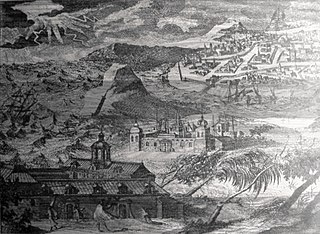
The College General is a Catholic interdiocesan seminary located at Tanjong Bungah in George Town, Penang, Malaysia. The college's foundation can be traced back to the 1665 establishment of the Seminary of Saint Joseph in Ayuthia which was then the capital of Siam.

It was believed by some scholars that Christianity was first introduced to Thailand by European missionaries. By 2021, there were nearly 1 million Christians in Thailand and represented 1.4% of the predominantly Buddhist national population. Christians are numerically and organizationally concentrated in northern Thailand, where they make up an estimated 16% of the population in some lowland districts and up to very high percentages in tribal districts.

France–Thailand relations cover a period from the 16th century until modern times. Relations started in earnest during the reign of Louis XIV of France with numerous reciprocal embassies and a major attempt by France to Christianize the Kingdom of Thailand and establish a French protectorate, which failed when the country revolted against foreign intrusions in 1688. France would only return more than a century and a half later as a modernised colonial power, engaging in a struggle for territory and influence against Thailand in mainland Southeast Asia that would last until the 20th century.

The Siamese revolution of 1688 was a major popular uprising in the Siamese Ayutthaya Kingdom which led to the overthrow of the pro-French Siamese king Narai. Phetracha, previously one of Narai's trusted military advisors, took advantage of the elderly Narai's illness, and killed Narai's Christian heir, along with a number of missionaries and Narai's influential foreign minister, the Greek adventurer Constantine Phaulkon. Phetracha then married Narai's daughter, took the throne, and pursued a policy of ousting French influence and military forces from Siam. One of the most prominent battles was 1688's Siege of Bangkok, when tens of thousands of Siamese forces spent four months besieging a French fortress within the city. As a consequence of the revolution, Siam severed significant ties with the Western world, with the exception of the Dutch East India Company, until the 19th century.
René Charbonneau was 17th century French medical missionary friar and a member of the Siam mission of the Société des Missions Etrangères. He was the first medical missionary to Siam. He arrived in the country in 1677.
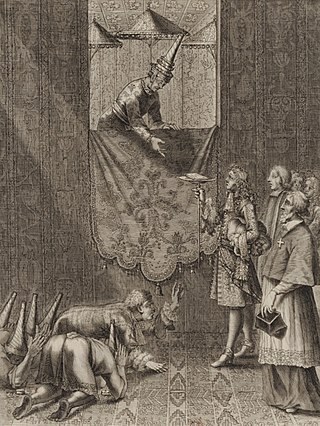
Louis Laneau was a French bishop of the 17th century who was active as a missionary in the kingdom of Siam. He was a member of the Paris Foreign Missions Society. He was initially nominated as the replacement of Msgr Ignace Cotolendi in charge of Nankin.
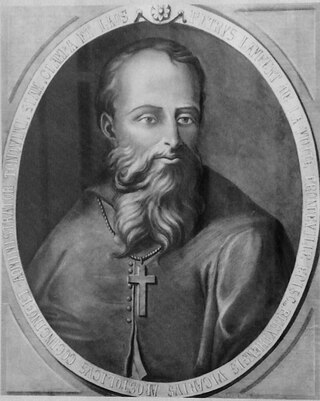
Pierre Lambert de la Motte, MEP was a French bishop. He was a founding member of the Paris Foreign Missions Society and became a missionary in Asia.
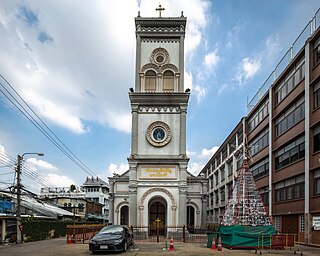
The Church of Immaculate Conception of Bangkok, also known as Wat Khamen, is the oldest Catholic church in Thailand. Its name Immaculate Conception comes from the Catholic belief that by the will of God the Virgin Mary was conceived free from original sin. The Church's history and construction is an example of the religious tolerance of the Thai people.

Wat Phra Si Sanphet was the holiest temple on the site of the old Royal Palace in Thailand's ancient capital of Ayutthaya until the city was completely destroyed by the Burmese in 1767, during the Burmese–Siamese War. It was the grandest and most beautiful temple in the capital and it served as a model for Wat Phra Kaew in Bangkok.
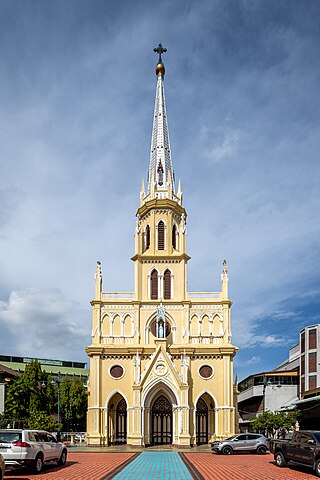
The Holy Rosary Church, also known as Kalawar Church, is a Roman Catholic church in Bangkok. It is located in Samphanthawong District, on the eastern bank of the Chao Phraya River. The history of the church dates to 1769, when a group of Portuguese Catholics resettled in the area after the fall of Ayutthaya; the current church building, in Gothic Revival style, was built in 1891–97 on the site of two previous structures.

Relations between Portugal and Thailand date as far as the 16th century. Portugal was the first European nation to make contact with the Ayutthaya Kingdom, in 1511. The Portuguese became dominant foreign traders, and established a presence in the capital. Portuguese traders introduced firearms as well as New-World goods from the Columbian Exchange, influencing Thai cuisine, language and culture. Although Portugal's overseas influence gradually declined from the 17th century, it maintained ties with Siam. The Portuguese Embassy in Bangkok, established in 1820, is the oldest diplomatic mission in the country. In contrast to other European powers, against whose colonial aspirations Siam struggled during the 19th century, Siam's relationship with Portugal was largely friendly. Both countries elevated their missions to embassy status in 1964, and Thailand established a resident embassy in Lisbon in 1981. Today, the two countries share a small amount of trade, tourism and cultural activities.

Khlong Om Non is a branch of the Chao Phraya River in Nonthaburi Province, part of Greater Bangkok. It is now regarded as a continuation of Khlong Bangkok Noi.

The Embassy of France in Bangkok is the chief diplomatic mission of France in Thailand, and one of the oldest in the country. It was established as a consulate in its current location on the Chao Phraya River off Charoen Krung Road in Bangkok's Bang Rak District in 1857, following the signing of the Treaty of Friendship and Commerce which re-established diplomatic relations between the two countries the previous year. The mission was elevated to a legation in 1892 and an embassy in 1949, and supports the ambassador in promoting political, economic and cultural ties between the two countries.

René Marie Joseph Perros MEP was a French Roman Catholic missionary and bishop who served as Vicar Apostolic of Eastern Siam from 1909 to 1947.

Louis August Chorin MEP was a French Roman Catholic missionary and bishop who served as Vicar Apostolic of Bangkok from 1947 to 1965.
Arnaud-Antoine Garnault M.E.P. was a French Roman Catholic missionary and bishop who served as Vicar Apostolic of Siam from 1786 to 1810.



















